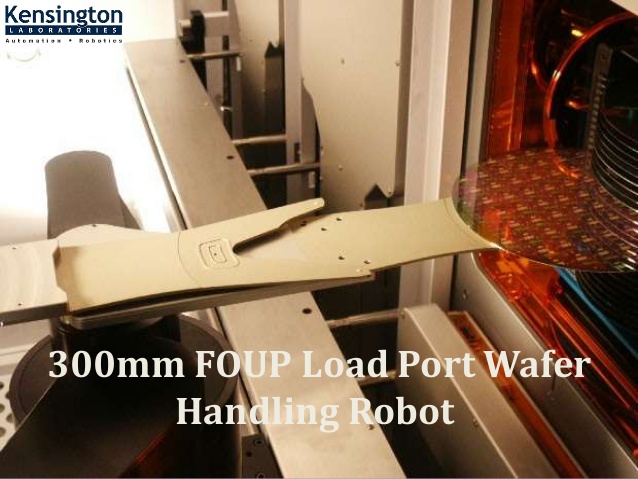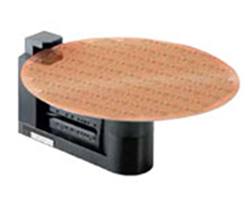The Role of Robotics in Wafer Processing and Semiconductor Manufacturing!
In the ever-evolving world of technology, the semiconductor industry plays a pivotal role in shaping our future. From the chips that power our smartphones to the processors driving advanced equipment, semiconductor manufacturing is at the heart of innovation. In this blog, we will shed light on wafer-processing robots and how they are transforming the world of semiconductor manufacturing.
A Revolution in Precision
Semiconductor manufacturing is all about precision, and that's where the wafer-processing robot comes into play. These robots are specialized machines designed to handle silicon wafers with the utmost care. These robotic systems are a crucial component of semiconductor production. The role of these robots is multi-faceted, ranging from transferring wafers to different processing stations, inspecting wafers for defects, and even sorting them based on quality. Their precision and reliability make them essential for maintaining the quality and consistency of the semiconductor manufacturing process.
Enhanced Efficiency and Productivity
One of the primary advantages of employing wafer processing robots is the significant boost in efficiency and productivity. Unlike humans, robots can work tirelessly without fatigue, 24/7, ensuring that manufacturing processes continue without interruptions. It accelerates production and reduces operational costs, a key consideration in the semiconductor industry. Moreover, wafer-processing robots can perform tasks with unmatched consistency and precision. Every wafer processed is identical, minimizing the possibility of faults and ensuring that the final product fulfills the highest quality criteria.
Improved Safety
Semiconductor manufacturing processes often involve hazardous materials and extreme conditions. Wafer processing robots, with their ability to operate in these environments, enhance workplace safety. They can easily handle toxic chemicals, high temperatures, and other potentially harmful elements, reducing the risks associated with human workers. Additionally, these robots are equipped with advanced sensors and safety features, minimizing the likelihood of accidents. It is essential in an industry where even minor errors can result in considerable losses.
Real-time Monitoring and Data Analysis
Integrating robotics in wafer processing allows real-time monitoring and data analysis. A wafer processing robot has sensors that continuously collect data during manufacturing. This data can be utilized to determine any anomalies or deviations from the desired quality standards. In case of any irregularities, wafer processing robots can automatically make adjustments or halt the process, preventing the production of faulty semiconductors. This real-time feedback loop is invaluable for maintaining product quality and reducing wastage.
Flexibility and Adaptability
The semiconductor industry is highly dynamic, with rapidly changing product specifications and demand. A wafer-processing robot is incredibly flexible and can be reprogrammed to adapt to new requirements. This agility is crucial in meeting market demands and staying competitive in the industry. As the technology evolves, these robots can be updated to handle different wafer sizes, new materials, and changing processing methods. This adaptability ensures that semiconductor manufacturers can keep up with the latest advancements in the field.
Cost Reduction
While the initial investment in a wafer processing robot may be substantial, the long-term cost benefits are undeniable. Their ability to operate continuously without the need for breaks or benefits significantly downsizes labor costs. Moreover, the precision and consistency they offer add to a reduction in material wastage and rework, ultimately saving money for manufacturers.
Addressing Industry Challenges
The semiconductor industry faces numerous challenges, including the push for more minor, more powerful chips and the need to reduce energy consumption. A Wafer processing robot plays a pivotal role in managing these challenges. They can handle smaller wafers and thinner materials with unparalleled precision, enabling the production of cutting-edge semiconductors. Furthermore, they contribute to reducing energy consumption by optimizing processes and minimizing errors, resulting in a greener, more sustainable manufacturing process.
Conclusion
There is no denying the fact that the semiconductor industry is on a constant quest for innovation and efficiency. As highlighted in this blog, wafer-processing robots are instrumental in driving these changes. These robots are at the forefront of semiconductor manufacturing with their precision, efficiency, safety, real-time monitoring, flexibility, and cost-saving features. In an industry where nanometers make all the difference, wafer processing robots are the unsung heroes, operating significantly to ensure that every semiconductor chip meets the highest quality standards. Their role is transforming semiconductor manufacturing and shaping the future of technology, making it faster, safer, and more sustainable. As we look ahead, we can expect even more groundbreaking developments in this field, driven by the relentless innovation of wafer processing robots.




Comments
Post a Comment